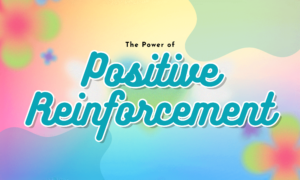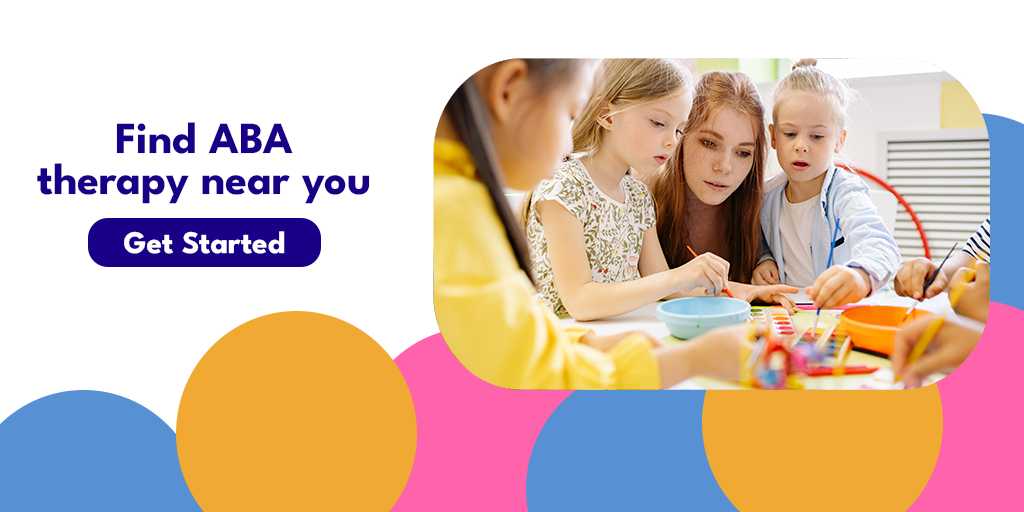Have you ever praised your child after they washed the dishes after dinner? The next time dinner came around, did they volunteer to do the chore again? If they did, this exchange is an example of positive reinforcement – one of the bedrock principles of Applied Behavior Analysis (ABA) therapy that is used to help children with autism learn important life skills and behaviors.
What Is Positive Reinforcement?
Before delving deeper into how positive reinforcement is used during ABA therapy, it is important to understand what this
therapeutic technique is and why it is used. Positive reinforcement is when a desirable stimulus is added after a desired behavior occurs.
Positive reinforcement is everywhere. It could show up at a job where an all-star employee receives a monetary bonus for excelling at their work to a classroom where a student is praised by their teacher in front of the class for solving a complicated math problem.
The desired object, whether it be a bonus or praise, is called a reinforcer. There are four kinds of reinforcers that can be used depending on the individual and context.
These include:
-
Natural reinforcers – These are the gold standard for reinforcers! Natural reinforcers occur as a direct result from someone exhibiting a desired behavior. An example of this can be a student who has trouble with tardiness and is able to get to school on time. Attending class may have benefits like getting to spend time with friends and better grades.
-
Token reinforcers – These reinforcers are awarded for performing certain behaviors and can be exchanged for something of value. Think about earning a sticker or a star and then being able to exchange these tokens for a reward. During ABA, therapists use a token board, which is a board or chart (often themed to a child’s interest) where the tokens are placed on the board as a reward for performing desired behaviors/actions.
-
Social reinforcers – Just like its name, social reinforcers are those that involve others expressing their approval of a behavior in public, like a teacher or parent letting a child know about a job well done.
-
Tangible reinforcers – Think about something physical, like a monetary reward or a new toy for following the desired behavior.
How Positive Reinforcement Is Used in ABA Therapy
ABA therapy is based on the antecedent-consequence model, which looks a little something like this:
-
Antecedent – The situation or occurrence that triggers a behavior.
-
Behavior – The response to the antecedent.
-
Consequence – What happens after a certain behavior occurs.
In ABA therapy, positive reinforcement is used during the consequence stage.
“All behaviors are followed by consequences, whether recognized or not, and those consequences are defined by the effect they have on the behavior. A consequence is termed a positive reinforcer when it results in strengthening the behavior it follows” (Waitling & Schwartz).
An example of this concept in action could be a child with autism who is learning how to cut a piece of paper with scissors. When the child can successfully complete one of the steps needed to accomplish the task, an ABA therapist may reward the child with one of the types of reinforcers listed above.
According to Richard M. Foxx, PhD, “Multiple, repeated opportunities are created each day for the child to gain new skills and practice mastered ones. Positive reinforcement is used generously to ensure that the child is motivated.”
Once the child begins mastering the skill, the therapist will slowly take away physical reinforcers so that the child is able to accomplish the task based solely on praise. When you are teaching a child how to eat, for example, you’ll provide quite a bit of praise and reinforcement when they first start doing this. Once the child figures out how to do this successfully, you don’t need to clap or give them a hug every time they have a meal. The behavior itself becomes its own reinforcer.
How Reinforcement Has Changed Over Time in ABA
ABA was originally based on the premise that all children would be a certain idealized way. Catherine Lord, PhD, a pioneering autism researcher and clinician at UCLA said that “ABA was created with a sort of model that there is a perfect way to be, and we know what that is and we’re going to teach you how to be that perfect way.”
Today, the paradigm has shifted. ABA practitioners understand that each child diagnosed with autism spectrum disorder is unique and each treatment plan is personalized to target the individuality of each child receiving ABA treatment.
Positive Reinforcement at Applied ABC
At Applied ABC, we treat patients like people, not their diagnosis. We prioritize individualized care and skill development. This helps children with autism lead more independent and fulfilling lives.
Our ABA therapy organization uses techniques like positive reinforcement, Discrete Trial Training (DTT), and Natural Environment Teaching (NET). These methods give children with autism a consistent way to learn new skills and achieve personalized goals.
If your child has been diagnosed with ASD, Applied ABC may be a good fit for your family.
Sources Cited:
Child Mind Institute. The Controversy Around ABA.
Foxx, R. Applied Behavior Analysis Treatment of Autism: The State of the Art.
Waitling, R. & Schwartz, I. Understanding and Implementing Positive Reinforcement as an Intervention Strategy for Children With Disabilities.








